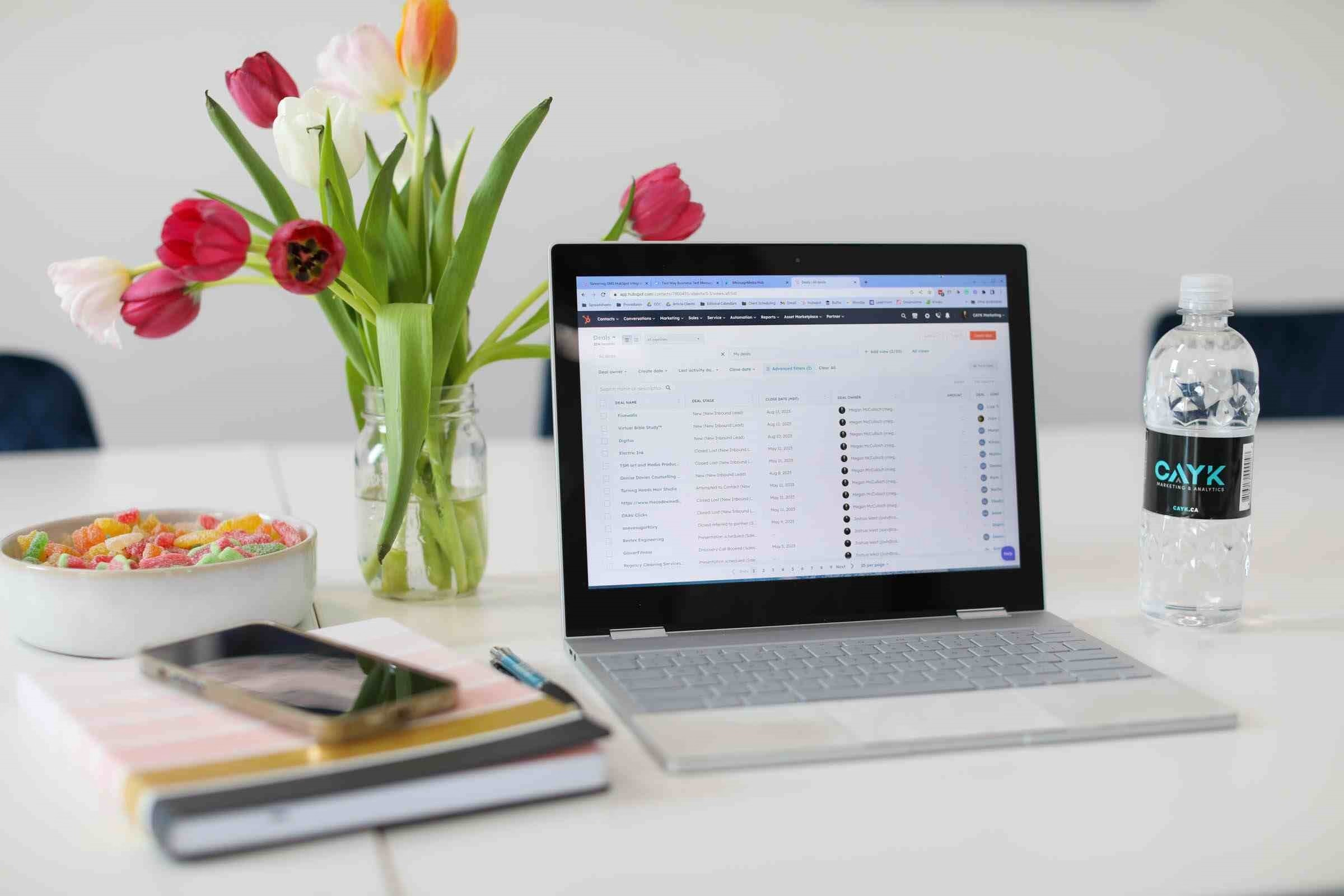Table of Contents
Article Overview:
A profitable holiday marketing campaign is never built on guesswork. It’s engineered through strategy, data, and precise execution. This guide outlines how to plan, launch, and optimize a holiday marketing campaign that cuts through seasonal competition and delivers measurable ROI.
What Goals Should You Set for Your Holiday Marketing Campaign?
Before you design creative or write ad copy, you need clear objectives. Decide what defines success in measurable terms. Is it revenue growth, new customer acquisition, or improved retention? Each goal changes how you plan, budget, and communicate. A sales-focused campaign might emphasize time-sensitive offers, conversion-driven landing pages, and high-frequency ad placements. A retention campaign, on the other hand, could focus on exclusive loyalty rewards, referral incentives, or personalized thank-you experiences that strengthen brand relationships. Setting defined KPIs, such as ROAS, conversion rate, or customer lifetime value, creates a clear roadmap for both creative direction and performance optimization. Without those measurable targets, every decision becomes reactive, and performance tracking turns into guesswork.
Why Should You Analyze Past Performance and Market Trends?
Data from last year’s campaigns offers critical insights. Evaluate metrics such as ROAS, CTR, and conversion rates. Identify which channels drove the highest return and which audiences provided the greatest lifetime value. Then, overlay those findings with current market trends. According to Google, 74% of holiday shoppers begin their buying journey earlier each year. That means early campaigns capture more impressions, lower CPCs, and higher conversions. The lesson: launch early and let data, not instinct, guide your strategy.
How Do You Build a Unified Holiday Campaign Strategy?
Your audience doesn’t see separate campaigns, they see one brand. Every interaction, from a social post to a paid ad to a website visit, builds a single impression of who you are. That’s why your creative, messaging, and offers must work together as a unified system, not as disconnected tactics. A fragmented campaign creates confusion, dilutes impact, and erodes trust. Consistency builds credibility and recognition. Start by defining a clear value proposition that communicates what makes your offer distinct and why it matters to your audience. Then, ensure that tone, visuals, and messaging align across every touchpoint: paid ads, social content, email marketing, and landing pages. Use similar language, design elements, and emotional cues so each interaction reinforces the next. Whether someone clicks a Google ad, scrolls through a video, or opens a holiday email, the experience should feel seamless, like one cohesive story that reflects your brand’s personality and purpose.

How Can Audience Segmentation Improve Holiday Campaign Results?
Precision targeting is where efficiency meets performance. The holidays drive up ad costs, so broad targeting burns the budget fast. Use CRM and analytics data to segment audiences by purchase history, demographics, and engagement behavior. Tailor your message to each segment:
- VIP customers receive early access or loyalty rewards.
- New customers get limited-time introductory offers.
- Inactive buyers see personalized reactivation promotions.
Segmentation allows you to transform one campaign into multiple high-performing micro-campaigns that compound overall ROI.
What Makes Creative Assets Convert During the Holidays?
Your creative determines whether someone scrolls past or clicks. Strong visuals capture attention; strategic messaging converts it. Avoid generic “festive” stock images that blend into the noise. Focus on authenticity, emotion, and clarity. Showcase real people, real value, and the feeling behind your offer. Your copy should be concise, emotionally resonant, and action-oriented. Test variations of headlines, visuals, and CTAs before full rollout. Even a small creative tweak can deliver significant performance gains when tested systematically.
If your seasonal campaigns extend into October, explore how to align visuals, storytelling, and timing for maximum engagement. Read our guide on How to Create Spooky and Engaging Social Media Campaigns for Halloween to learn how to build momentum before the holiday rush begins.
How Do You Optimize Channels for Conversion?
No campaign performs if your funnel breaks at the last step. Every click represents potential revenue, so your website and landing pages must be optimized before launch. Audit every element of the user journey: page load speed, mobile responsiveness, navigation flow, and checkout experience. Even a one-second delay can reduce conversions, and a poor mobile layout can drive users away instantly. Each landing page should align perfectly with ad intent, delivering exactly what the click promised without unnecessary distractions. Simplify checkout forms, remove friction, and provide secure, recognizable payment options to build trust. Include clear testimonials, user reviews, and recognizable trust badges to reinforce credibility at the point of decision. Finally, verify that all tracking pixels, analytics tags, and event triggers are firing properly. Every interaction, from first click to final purchase, should be measurable and attributable, giving you the data you need to analyze performance and scale what works.
A well-optimized website is the foundation of every profitable campaign. To keep visitors engaged beyond the holidays, discover What Web Design Updates Improve Customer Retention for the Holidays and learn how design improvements can turn seasonal traffic into long-term loyalty.
How Should You Manage Your Holiday Campaign Budget and Timing?
Ad costs rise sharply in Q4, so smart budget management is critical. Plan allocations across awareness, conversion, and remarketing phases. Launch awareness campaigns in early November when costs are lower. Push conversions heavily through December, then retarget new and existing customers post-holiday. Brands that distribute spend evenly across the season often outperform those that go all-in on peak weeks. A strategic cadence keeps performance steady, builds momentum, and avoids overspending in saturated auction periods.

Why Is Real-Time Optimization Essential for Holiday Marketing Success?
The best campaigns don’t just run, they evolve. Monitor performance daily using live dashboards. Track ROI by channel and audience segment. Refresh creative when engagement declines, reallocate budget to high-performing assets, and fine-tune targeting as new data emerges. Real-time optimization allows you to capitalize on what’s working and eliminate what’s not. The brands that stay agile win the season, while static campaigns lose efficiency within days.
What Are the Core Takeaways for a Profitable Holiday Campaign?
Winning holiday campaigns balance creativity, strategy, and adaptability. To summarize:
- Set clear, measurable goals aligned with your business objectives.
- Analyze past campaign data and current consumer trends.
- Keep your messaging consistent across all channels.
- Segment your audience for relevance and efficiency.
- Continuously test, measure, and optimize based on performance data.
A successful holiday marketing campaign combines emotional storytelling with analytical precision. The brands that dominate the season plan early, target strategically, and optimize relentlessly. Don’t wait for December to learn what works. Build, measure, and refine now.
CAYK Marketing has delivered performance-driven holiday campaigns since Google first launched its advertising platform. If you want measurable results this season, not just festive impressions, start your campaign with a strategy that’s built to convert.
Frequently Asked Questions
When Should You Start Planning a Holiday Marketing Campaign?
Ideally, planning should begin by early Q3. This allows time for creative development, testing, and early audience building before ad competition spikes in November and December.
How Much Should You Spend on Holiday Marketing?
Budget depends on business size and channel mix, but allocate more toward retargeting and conversion campaigns closer to peak shopping periods. Always reserve 10–15% for real-time adjustments.
Which Channels Work Best for Holiday Marketing?
Paid search, paid social, and email marketing remain top performers. However, integrated strategies combining all three typically deliver the strongest ROI and retention.
What Are Common Mistakes in Holiday Campaigns?
Launching too late, neglecting mobile optimization, and ignoring data-driven adjustments are the biggest errors. Static campaigns lose relevance fast in competitive holiday markets.
How Do You Measure Holiday Campaign Success?
Track metrics tied directly to your campaign goal, such as ROAS for sales-driven efforts or engagement rate for awareness campaigns. Combine quantitative data with qualitative feedback to refine future strategy.
How useful was this post?
Click on a star to rate it!
Average rating 0 / 5. Vote count: 0
No votes so far! Be the first to rate this post.













